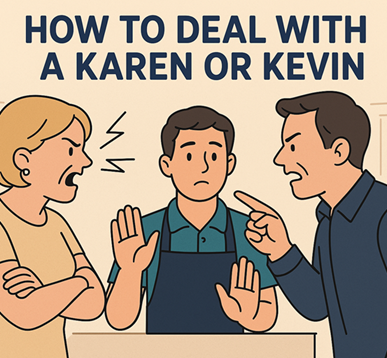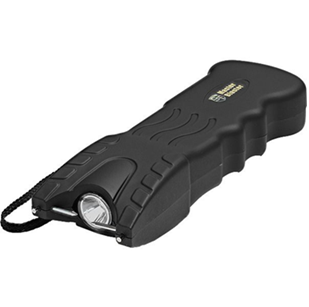What to Do if a Fire Starts in Your Home or at Work
 Fires can be devastating, but knowing what to do in the event of one can save lives and minimize damage. Whether at home or work, having a clear understanding of fire safety procedures is critical. This guide outlines the steps to take if a fire starts and how to prepare in advance to handle such emergencies effectively.
Fires can be devastating, but knowing what to do in the event of one can save lives and minimize damage. Whether at home or work, having a clear understanding of fire safety procedures is critical. This guide outlines the steps to take if a fire starts and how to prepare in advance to handle such emergencies effectively.
Step 1: Stay Calm and Assess the Situation
The first and most important step in any emergency is to remain calm. Panic can lead to poor decision-making, which may worsen the situation. Take a moment to assess the fire’s size and location to determine the appropriate response.
-
Small Fires: If the fire is small and contained, such as a stovetop fire or a trash can fire, you may be able to extinguish it using a fire extinguisher.
-
Large or Spreading Fires: If the fire is spreading quickly or producing a lot of smoke, evacuate immediately and call emergency services.
Step 2: Alert Others
In a workplace or shared residence, alert everyone in the building as soon as possible. Use the fire alarm system if one is available, or shout to notify others. Early warnings can save lives by giving people more time to escape.
Step 3: Evacuate Safely
When evacuating, prioritize your safety and the safety of others. Follow these guidelines:
-
Know Your Exits: Familiarize yourself with the nearest exits in your home or workplace. In workplaces, follow the posted evacuation routes.
-
Stay Low: Smoke rises, so staying low to the ground can help you avoid inhaling toxic fumes.
-
Close Doors: If possible, close doors behind you to slow the fire’s spread.
-
Do Not Use Elevators: Use stairs instead, as elevators can malfunction or become trapped during a fire.
-
Assist Others: Help those who may need assistance, such as children, elderly individuals, or people with disabilities.
Step 4: Call Emergency Services
Once you are in a safe location, call emergency services immediately. Provide clear and concise information:
-
Your location
-
The type and size of the fire
-
Any known hazards, such as chemicals or gas lines
-
Whether anyone is trapped inside
Step 5: Do Not Re-Enter the Building
Never go back into a burning building. Once you are outside, stay out. Re-entering can put your life at risk and hinder firefighters’ efforts to control the fire and rescue anyone still inside.
Step 6: Use a Fire Extinguisher (If Safe)
If the fire is small and manageable, and you are trained in using a fire extinguisher, you may attempt to put it out. Follow the PASS method:
-
Pull the pin.
-
Aim the nozzle at the base of the fire.
-
Squeeze the handle to release the extinguishing agent.
-
Sweep the nozzle from side to side until the fire is out.
If the fire does not extinguish quickly, evacuate immediately.
Step 7: Provide First Aid
If someone is injured, provide first aid while waiting for emergency responders:
-
Burns: Cool burns with running water for at least 10 minutes. Do not apply ice or ointments.
-
Smoke Inhalation: Move the person to fresh air and monitor their breathing. If they are unconscious, perform CPR if trained to do so.
Step 8: Report the Incident
After the fire is under control, report the incident to the relevant authorities:
-
Home: Contact your insurance company to start the claims process.
-
Workplace: Notify your employer and follow company protocols for reporting incidents.
Fire Prevention Tips
While knowing how to respond to a fire is essential, prevention is the best strategy. Here are some tips to reduce the risk of fires:
-
Install Smoke Alarms: Place smoke alarms on every level of your home and in key areas of your workplace. Test them monthly and replace batteries annually.
-
Have Fire Extinguishers: Keep fire extinguishers in accessible locations, such as the kitchen, garage, and near exits.
-
Practice Fire Drills: Conduct regular fire drills at home and work to ensure everyone knows the evacuation plan.
-
Avoid Overloading Circuits: Do not overload electrical outlets or use damaged cords.
-
Be Careful with Open Flames: Never leave candles, stoves, or fireplaces unattended.
-
Store Flammable Materials Safely: Keep flammable liquids and materials away from heat sources.
Special Considerations for Workplaces
Workplaces often have specific fire safety requirements and protocols. Employees should:
-
Familiarize themselves with the company’s fire safety plan.
-
Participate in regular fire safety training.
-
Know the location of fire extinguishers, alarms, and exits.
-
Report any fire hazards to the appropriate personnel.
After the Fire
Once the fire is extinguished, there are important steps to take:
-
Ensure Safety: Do not re-enter the building until it is declared safe by authorities.
-
Document Damage: Take photos and notes for insurance claims or workplace incident reports.
-
Seek Support: Fires can be traumatic. Consider seeking counseling or support groups if needed.
Conclusion
Fires can happen unexpectedly, but being prepared and knowing how to respond can make all the difference. By staying calm, evacuating safely, and following fire safety protocols, you can protect yourself and others. Remember, prevention is key—take proactive steps to minimize fire risks at home and work.
Company Info
Customer Service
Product Information
- TASER® and Stun Devices Regulations by State
- TASER® Safe Escape Product Replacement Guarantee
- TASER® Comparison Chart
- TASER® User Manuals
- TASER® Warranty Info
- Byrna Product Catalog
- PepperBall Manuals & Spec Sheets
- Pepper Spray Laws
- Air Gun Laws
- States that Restrict Automatic and Butterfly Knives
- Our Print Catalog



































































